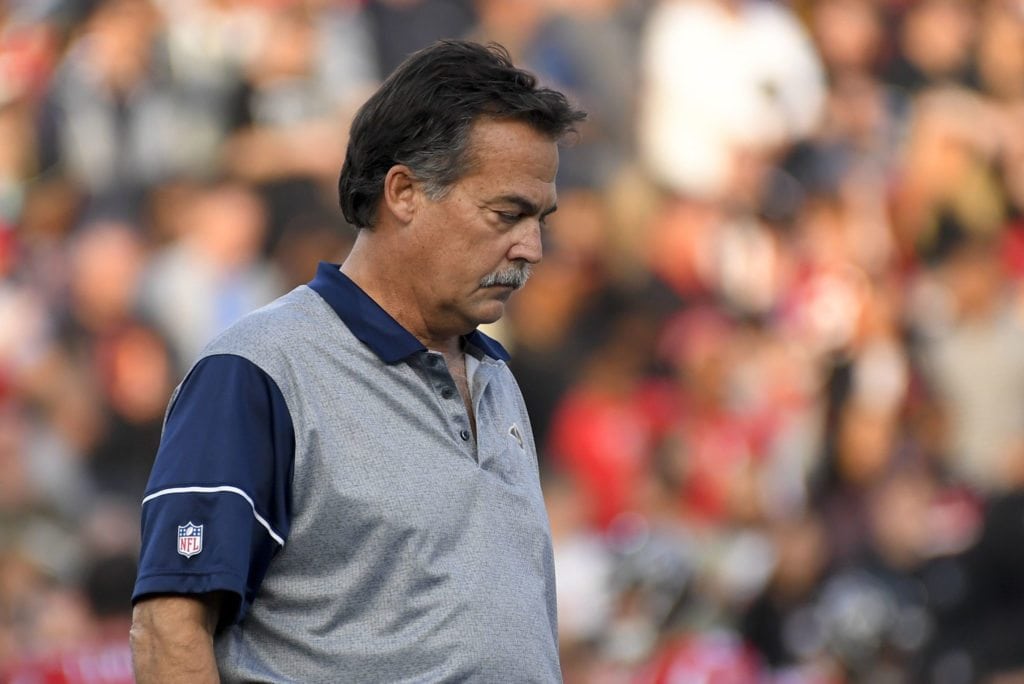FAB 2. Takeaways On Defense Fuel Bucs’ Playoff Push
Diving deep into the statistics of what it’s going to take for Tampa Bay to make the playoffs this year, many of the indicators fall on the defensive side of the ball. I’ve already covered how the Bucs need to hold opponents under 280 total points (even 300 would be an improvement and would probably suffice) in 2017. Tampa Bay’s defense also needs to be in the top 10 in scoring defense or total yards – or both – to increase its chances.
But there are some other common denominators that will also help the Bucs’ playoff push. Just as important as point differential is in determining postseason hopes and aspirations, turnover margin is just as critical.

Ex-Bucs CB Ronde Barber – Photo by: Getty Images
The first rule of football is “Don’t beat yourself.” That happens when a team gets too many penalties and has too many turnovers on offense.
There have been a few times when the Bucs have ranked high in turnover margin and not made the postseason, such as the 2010 season when Raheem Morris’ troops had the fifth-best turnover margin in the league. Although it missed the playoffs by one game, Tampa Bay did have a 10-6 record that season.
And there was the 2013 Greg Schiano team that had the league’s seventh-best turnover margin and finished 4-12. Also, the 1978 Buccaneers had the eighth-best turnover margin and only compiled a 5-11 record.
Bucs Playoff Teams’ Turnover Margin Ranking
1979 – ranked 16th in turnover margin ranking
1981 – ranked 2nd in turnover margin ranking
1997 – ranked 12th in turnover margin ranking
1999 – ranked 17th in turnover margin ranking
2000 – ranked 3rd in turnover margin ranking
2001 – ranked 2nd in turnover margin ranking
2002 – ranked 1st in turnover margin ranking
2005 – ranked 9th in turnover margin ranking
2007 – ranked 4th in turnover margin ranking
Aside from the strike-shortened 1982 season, which I’m not counting in any of these playoff team measurables, no Tampa Bay playoff squad had finished in the bottom half of the league in turnover margin – except for the fabled 1999 team that lost to the eventual Super Bowl champion St. Louis Rams in the NFC Championship Game 11-6. The ’99 team is an anomaly because of a couple factors.

Ex-Bucs DT Warren Sapp, DE Marcus Jones and DT Brad Culpepper – Photo by: Getty Images
First, that particular Bucs team finished third in both scoring defense and total defense. And second, that team had a 35-point differential. The fact that the turnover margin was so out of whack likely had to do more with the Bucs offense, which went through three quarterbacks that season, than it did the defense, which made several splash plays and carried Tampa Bay to within six points of the Super Bowl.
The ’99 defense is one of six Bucs units to record 40 sacks or more. Every time Tampa Bay has accomplished that feat, it’s made it to the playoffs. The Bucs have come close over the last two years, recording 38 sacks, but falling short of the magical number Tampa Bay has achieved historically to enter the postseason.
Only three times in Bucs playoff history has the team played a seventeenth game and not registered at least 40 sacks in the regular season. That occurred in 1981 (23 sacks), 2005 (35 sacks) and 2007 (32 sacks). If Tampa Bay records 40 sacks or more in 2017 I bet they’re going to the playoffs.
Bucs Playoff Teams’ Sacks
1979 – 40 sacks – Lee Roy Selmon – 11 sacks
1981 – 23 sacks – Lee Roy Selmon – 6.5 sacks
1997 – 44 sacks – Warren Sapp – 10.5 sacks – Chidi Ahanotu – 10 sacks
1999 – 43 sacks – Warren Sapp – 12 sacks
2000 – 55 sacks – Warren Sapp – 16.5 sacks – Marcus Jones – 13 sacks
2001 – 42 sacks – Simeon Rice – 11 sacks
2002 – 43 sacks – Simeon Rice – 15.5 sacks
2005 – 35 sacks – Simeon Rice – 14 sacks
2007 – 32 sacks – Stylez G. White – 8 sacks
As you can see from the stats above, having a double-digit sacker is helpful in going to the playoffs as Tampa Bay has accomplished that in seven out of the team’s nine postseason trips (not including the 1982 season). Having a double-digit sacker doesn’t automatically mean a playoff berth, either, as Bucs linebacker Broderick Thomas had 11 in 1991, and defensive tackle Santana Dotson recorded 10 as a rookie in 1992 and neither team made the postseason.

Ex-Bucs DT Warren Sapp and DE Greg Spries – Photo by: Getty Images
Tampa Bay hasn’t had a double-digit sacker since Rice had 14 in 2005 and that’s part of the reason why the Bucs have had a nine-year postseason drought and have only been to the playoffs once in the last 11 years.
In addition to sacks, the amount of takeaways is crucial as no Bucs team that has made the playoffs without recording at least 30 takeaways.
Bucs Playoff Teams’ Takeaways
1979 – 14 INTs + 18 FRs = 32 takeaways
1981 – 32 INTs + 13 FR = 45 takeaways
1997 – 13 INTs + 17 FR = 30 takeaways
1999 – 21 INTs + 9 FR = 30 takeaways
2000 – 25 INTs + 16 FR = 41 takeaways
2001 – 28 INTs + 12 FR = 40 takeaways
2002 – 31 INTs + 8 FR = 39 takeaways
2005 – 17 INTs + 13 FR = 30 takeaways
2007 – 16 INTs + 21 FR = 37 takeaways
The Bucs missed the playoffs in 2010 despite going 10-6 because the defense only had 26 sacks and 27 total takeaways. Tampa Bay went 9-7 and missed the postseason in 2008, but only had 29 sacks and 29 takeaways.
The Bucs were on the cusp of making the playoffs in 2016 after going 9-7 and the defense came close to hitting on several key indicators. While Tampa Bay had 38 sacks last season, the defense only had 28 takeaways and ranked 13th in turnover margin.
Close, but no cigar last year.
We’ll see what this year has in store for Smith’s defense.
Scott Reynolds is in his 30th year of covering the Tampa Bay Buccaneers as the vice president, publisher and senior Bucs beat writer for PewterReport.com. Author of the popular SR's Fab 5 column on Fridays, Reynolds oversees web development and forges marketing partnerships for PewterReport.com in addition to his editorial duties. A graduate of Kansas State University in 1995, Reynolds spent six years giving back to the community as the defensive coordinator/defensive line coach for his sons' Pop Warner team, the South Pasco Predators. Reynolds can be reached at: [email protected]



